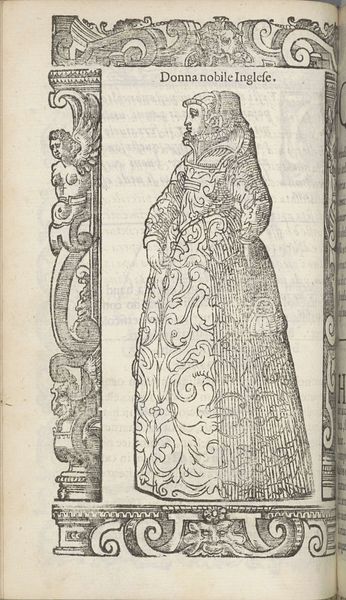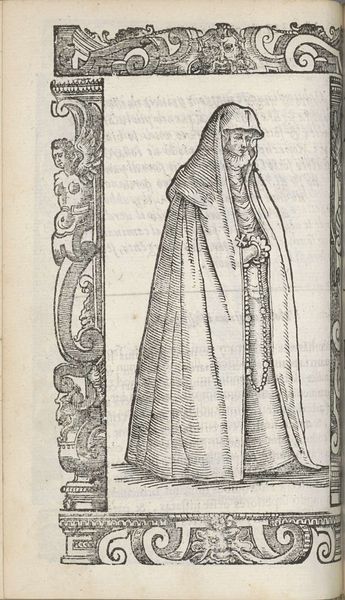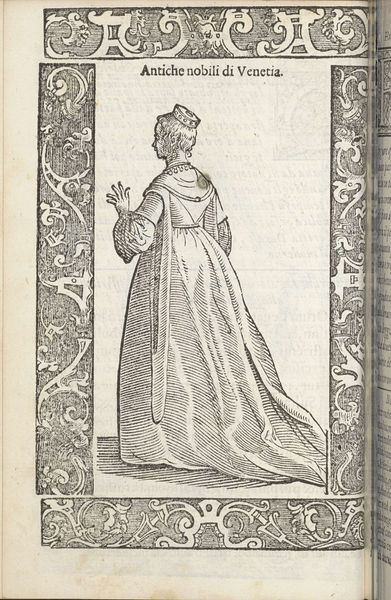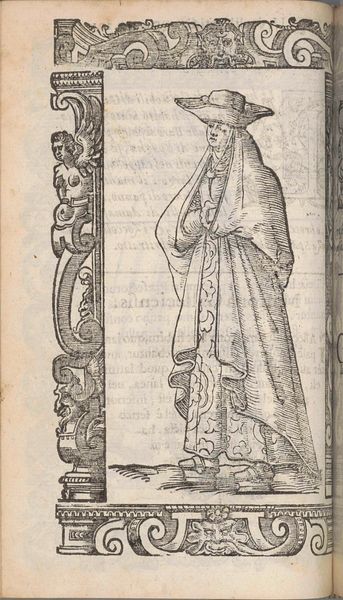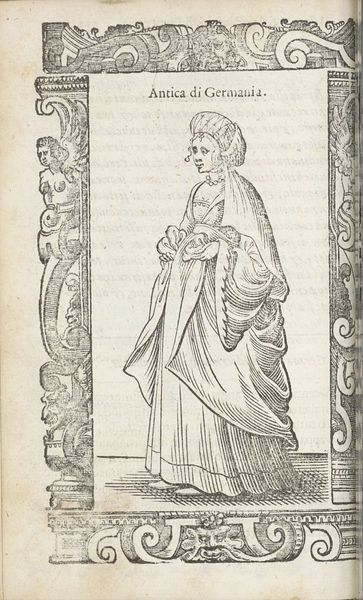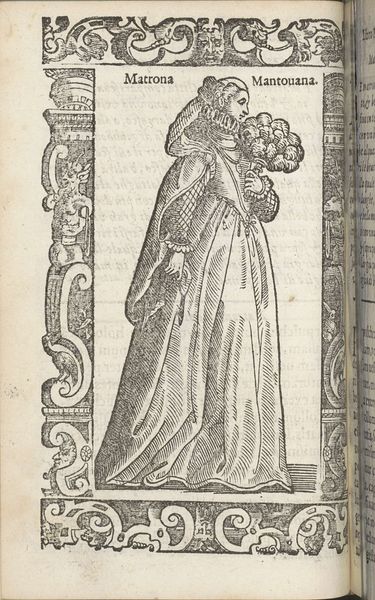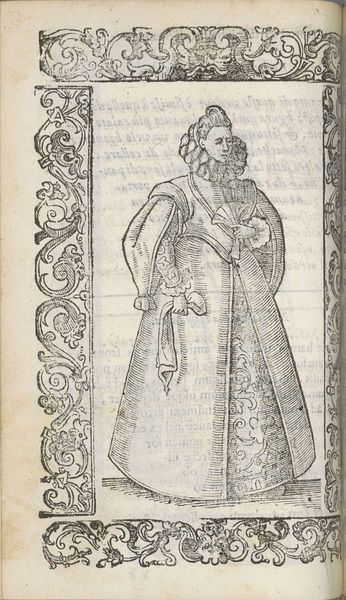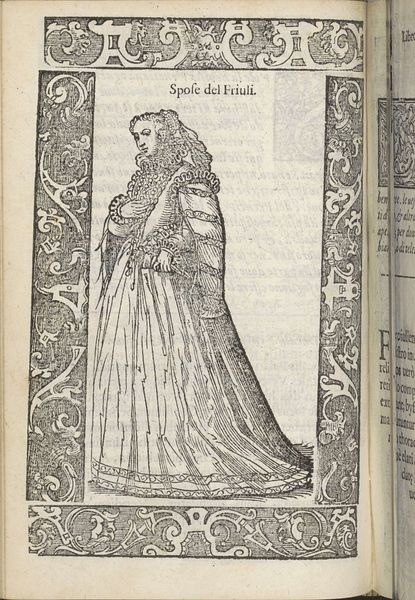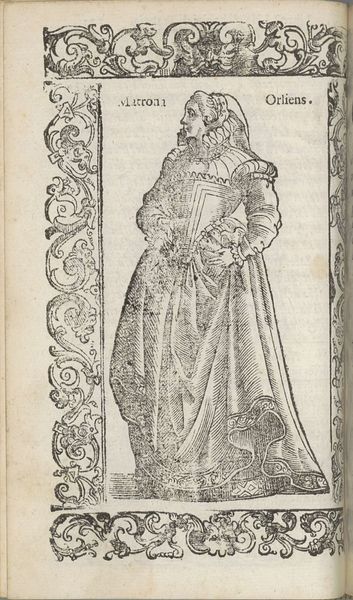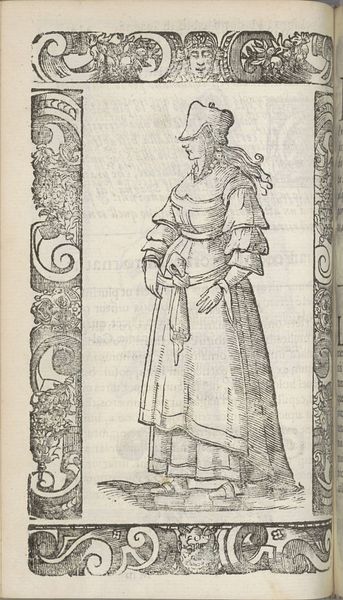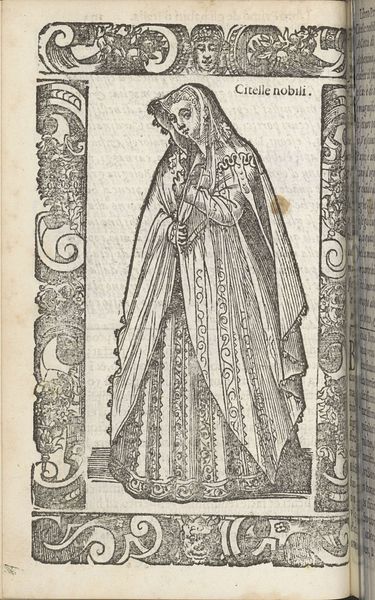
#
mechanical pen drawing
#
pen sketch
#
pencil sketch
#
old engraving style
#
sketch book
#
personal sketchbook
#
pen-ink sketch
#
pen work
#
sketchbook drawing
#
sketchbook art
Dimensions: height 167 mm, width 125 mm
Copyright: Rijks Museum: Open Domain
Curator: This is "Citella Nobile (Franchese)" created in 1598 by Christoph Krieger. It's an intriguing pen drawing in that old engraving style, almost like peering into a historical sketchbook. Editor: My first impression? Elegance caught in ink! She's like a whispered secret from a time when portraits were about more than just likeness. There’s something almost hauntingly beautiful in the precise lines. Curator: Absolutely, that haunting quality comes from the period's conventions surrounding portraiture and female representation. Consider how her clothing dictates so much about her societal position; a tightly constructed identity reinforced through material culture. Editor: Material culture...Right, her fabulous dress practically screams, "Don't forget I have status!" But, is it just me, or does she look slightly uncomfortable, like she’s aching to just rip off that ridiculously opulent gown and run barefoot through a field? Curator: Well, that speaks to the intersection of fashion, gender, and power dynamics. What might seem like mere adornment was instrumental in communicating and enforcing rigid social hierarchies. It limited physical freedom, undoubtedly. Editor: Right. Trapped in lace! Krieger captures all that just with simple lines. Speaking of lines, look at how they mimic fabric, light, and shadows! You’d almost think it was made with charcoal. How would you characterize the symbolic choices made in this work? Curator: Krieger's choice of depicting her in profile certainly nods to classical conventions, linking her to historical ideals of beauty and nobility, almost enshrining her as a cultural icon. This technique of profile portraiture has strong ties to Renaissance humanism, lending prestige through association with antique values and the notion of an elite archetype. Editor: It's so academic... she looks trapped between wanting to embrace and breaking away from societal expectations of her gender. Still, she remains captivating and gives me pause! Curator: Indeed, that tension, that potential for individual identity to challenge preordained roles, renders it a complex reflection on its time. It’s a very nuanced statement, indeed. Editor: Exactly! Like history is a fascinating, layered, complicated story written in pen. Thanks for taking this walk through this lovely lady! Curator: And thank you for sharing that refreshing burst of interpretative flair; it provides avenues into interrogating works that encourage all of us to think about this bygone era with a renewed, enlightened outlook.
Comments
No comments
Be the first to comment and join the conversation on the ultimate creative platform.
